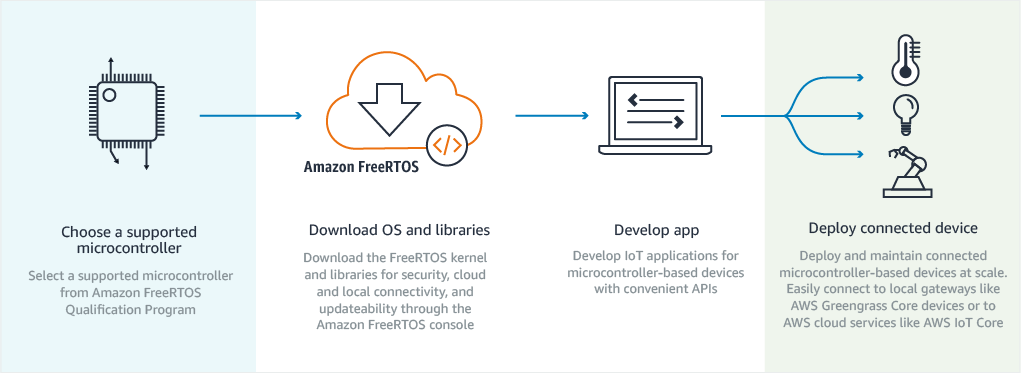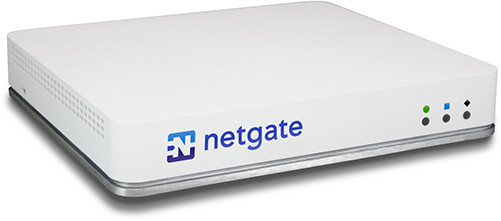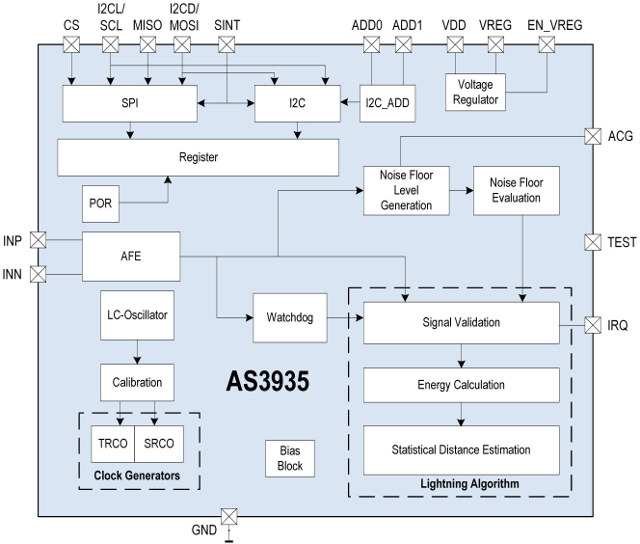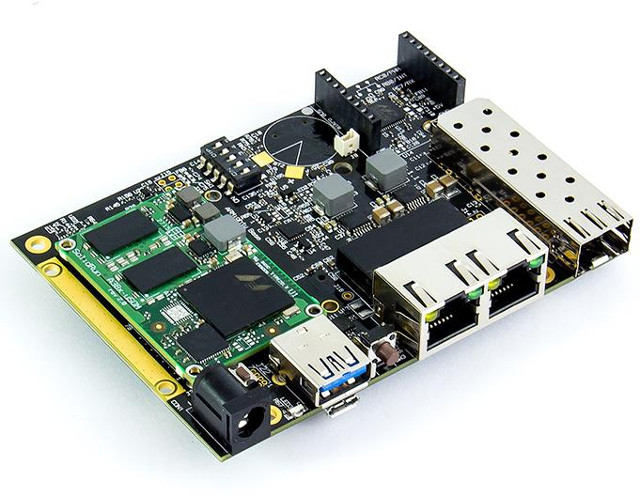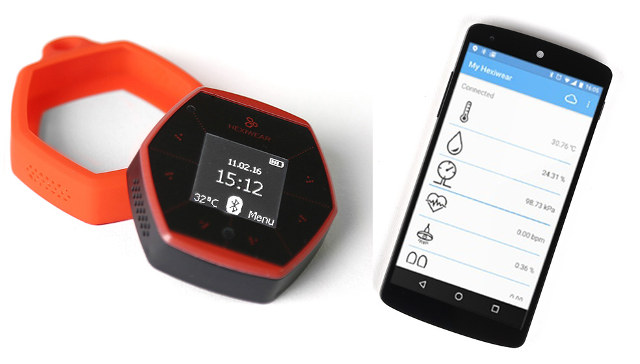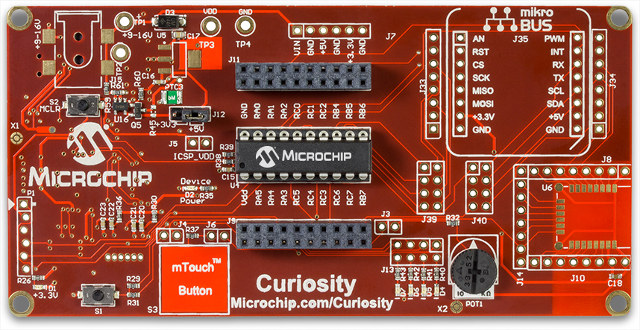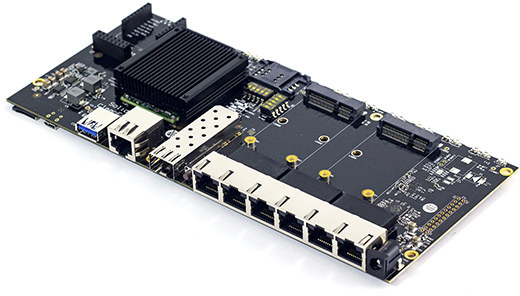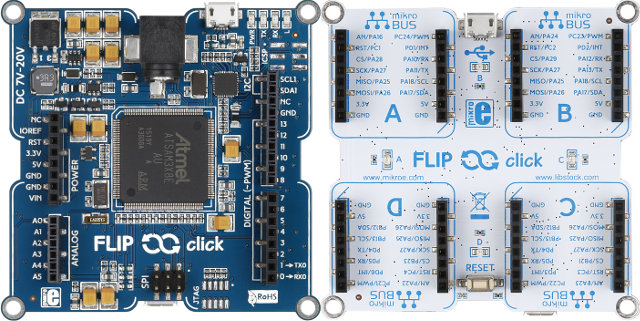FreeRTOS is an open source real-time operating system for microcontrollers released under an MIT license, and when it comes to adoption in embedded systems it’s right there near the top with embedded Linux according to Aspencore 2017 embedded markets study. For example, some Espressif SDKs for ESP8266 or ESP32 are based on FreeRTOS, and so is Mediatek LinkIt Development Platform for RTOS. The recently announced Amazon FreeRTOS (a:FreeRTOS) leverages the open source operating systems, and extends it with with libraries that enable local and AWS cloud connectivity, security, and soon over-the-air updates. a:FreeRTOS is free of charge, open source, and available today. In order to get started, you’ll have a choice of 4 hardware platforms: STMicro STM32L4 Discovery Kit IoT Node (B-L475E-IOT01A) powered by STM32L475 ARM Cortex-M4 MCU with 802.11 b/g/n WiFi, Bluetooth 4.1 LE, RF (868 / 915 MHz), and NFC connectivity, plenty of sensors NXP LPC54018 IoT module (OM40007) […]
Netgate SG-3100 is an ARM based pfSense Firewall Appliance
pfSense software is a popular open source firewall distribution based on FreeBSD operating system that is entirely managed via a web interface. Up until recently, FreeBSD (see comments section) pfSense would only support x86-64 (Intel or AMD hardware). But progress has been made with pfSense (and FreeBSD) for ARM, and Netgate, the company behind pfSense, is now selling two ARM based firewall appliances with SG-1000 microFirewall powered by Texas Instruments AM3352 Cortex A8 SoC, and sine a little over of month, SG-3100 firewall appliance based on a more suitable Marvell dual core Cortex A9 processor. Netgate SG-3100 hardware specifications: Processor – Marvell ARMADA 38x 88F6820 dual core ARM Cortex-A9 @ 1.6 GHz with NEON SIMD and FPU System Memory – 2GB DDR4L Non ECC Storage – 8GB eMMC Flash Network Interfaces 2x Gigabit Ethernet configured as dual WAN or one WAN one LAN 4x ports Gigabit Marvell 88E6141 switch, uplinked […]
Detect Lightning with Those AMS AS3935 “Thunder” Boards
Launched in 2012, AMS AS3935 Franklin lightning sensor is – at its name implies – a lightning sensing IC. The chip was designed for low power, portable or fixed wire-line applications, and beside detecting electrical emissions from lightning activity, it can also provide an estimation of the distance to the head of the storm from 40km away down to 1km, while filtering out other signals from motors, microwave ovens, etc… The chip interfaces via SPI or I2C to the host processor / micro-controller, and comes in a small MLPW-16 (4x4mm) package. Price is $3.55 per unit for 1k orders. Applications include wearables, golf carts, pool safety, portable GPS, bike computers, weather stations, uninterruptible power supplies, smart grid systems, environmental monitoring systems, etc… Basically, AS3935 can be used either for weather monitoring, or safety applications. I’ve found two maker boards with the chip: MikroElectronika Thunder Click board compatible with MikroBUS socket […]
SolidRun ClearFog Base is a $90 Router/Networking Board with USB 3.0, M.2, mSATA, and Gigabit Ethernet Support
SolidRun introduced ClearFog Pro and Base board based on Marvell Armada 380/388 processor at the end of last year, but at the time, only the higher-end ClearFog Pro board was available for $170 and up. Now the company has officially launched the cheaper ClearFog Base board based on the same processor, two Gigabit Ethernet RJ45 ports, one SFP cage, a USB 3.0 port, an M.2 slot, mPCIe expansion slot, and more. ClearFog Base board specifications: Processor – Marvell ARMADA 388 (88F6828) dual core ARMv7 processor (Cortex A9 class) @ up to 1.6 GHz with 1MB L2 cache, NEON and FPU System Memory – 1GB RAM by default (2GB optional) Storage – 1x micro SD slot, optional 4GB eMMC flash, 1x M.2 slot, 1x mSATA/mPCIE Connectivity – 2x dedicated Gigabit Ethernet ports, 1x SFP cage USB – 1x USB 3.0 port Expansions 1x mini PCI Express slots (shared with mSATA ) 1x […]
Hexiwear is an Open Source Wearable Development Kit Expandable with Add-on Boards (Crowdfunding)
MikroElektronika has designed Hexiwear, a wearable development kit that you can wear and hack as a smartwatch thanks to an (optionally) included wristband, or use a an IoT development kit thanks to its docking station taking up to three “Click” boards among a choice of over 180 modules. . Hexiwear hardware specifications: MCU – NXP Kinetis K64x ARM Cortex-M4 MCU @ 120 MHz with 1MB Flash and 256KB SRAM Storage – 8 MB Flash memory Display – 1.1” full color OLED display with capacitive touch Connectivity – Bluetooth 4.0 LE and 802.15.4 via NXP Kinetis KW4x Cortex-M0+ wireless MCU Sensors -3D accelerometer and magnetometer (NXP FXOS8700CQ), 3-Axis gyroscope (NXP FXAS21002), pressure sensor (NXP MPL3115A2R1), light-to-digital converter, humidity and temperature sensor, heart-rate sensor (HRM) USB – micro USB cable for power and charging Misc – RGB LED, haptic feedback engine, docking connector Battery – 190 mAh 2C Li-Po battery; 600 mA […]
$15 Microchip Curiosity Development Board Supports 8-bit PIC Microcontrollers
I’ve just found out Microchip had introduced Curiosity development board a little while ago, in order to let students and others experiment with their 8-bit PIC DIP MCUs, and including MikroElectronika Mikrobus footprint, an interface for Microchip RN4020 module to add Bluetooth Low Energy, as well as other headers and some extra features like buttons, and a potentiometer. Microchip Curiosity board specifications: MCU – PIC MCU socket for 8, 14, and 20-pin micro-controllers with PIC16F1619 pre-installed. Expansion mikroBUS Click Board footprint Microchip RN4020 Bluetooth Module Footprint USB – USB mini-B connector Misc – Master Clear Reset button, potentiometer, LEDs, mTouch button, push button Power Supply 5V via USB 9V using an external power supply (footprints only) 3.3V to 5V external power supply via TP3 and TP4 pins Dimensions – N/A There are over 160 MikroElektronika Click boars on the market now, but only seven are listed with code samples for […]
SolidRun ClearFog Pro and Base Router Boards Feature Marvell ARMADA 380/388 Processor
Last month, I wrote about Turris Omnia an upcoming open source hardware router board with 6 Gigbit Ethernet ports and an SFP cage powered by Marvell ARMADA 385 processor. SolidRun has now unveiled ClearFog Pro router board with similar features, but opting instead for either Marvell ARMADA 380 or 388 processor. The company will also soon launch or lower-end version called ClearFog Base with the less ports, but with the same system-on-module as ClearFog Pro: Processor – Marvell ARMADA 380 (88F6810) single core or 388 (88F6828) dual core ARMv7 processor (Cortex A9 class) @ up to 1.6 GHz with 1MB L2 cache, NEON and FPU System Memory – 256MB to 1GB 16-bit DDR3L (ARMADA 380) or 32-bit DDR3L (ARMADA 388) Storage Pro version – M.2 slot, 1x micro SD slot, 2x mSATA/mPCIE Base version – M.2 slot, 1x micro SD slot, 1x mSATA/mPCIE Connectivity Pro version – 6x switched Gigabit […]
Flip & Click Board with Atmel SAM3X8E MCU Features 4 mikroBUS Sockets & Arduino Headers
HummingBoard Gate introduced last month was the first board I saw with a mikroBUS socket that can be used with over 150 “Click boards” by MikroElektronika adding functionalities such as sensors, OLED displays, relays, servos, and so on. But if you project don’t quite need the power of a full featured Linux board, or you simply prefer working with the Arduino IDE, MikroElektronika has just launched Flip & Click board powered by an Atmel SAM3X8E Cortex-M3 micro-controller and featuring four mikroBUS sockets on the back of the board, as well as Arduino compatible headers on the top. Flip & Click board specifications: MCU – Atmel AT91SAM3X8E Cortex M3 micro-controller @ 84MHz with 512 KB flash, 100 KB SRAM (64+32+4), also used in Arduino Due. Expansions Headers Arduino UNO compatible headers on the top 4x mikroBUS socket on the bottom USB – micro USB port for programming and power Misc – […]


